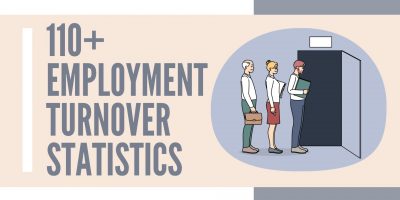
Culture Add vs. Culture Fit vs. Value Fit
Since the company’s culture has always been crucial in attracting and retaining talent, HR professionals might struggle with the dilemma: should they hire for culture add vs culture fit?


CEO of Evoloshen

Signature Home Services

HR Director at Personnel Checks

General Manager
of Frontline
Recruitment
Group

BenchOn

Werkling CEO & Founder
Periodic complaints of labor shortages are not uncommon. In fact, throughout history, we have seen this condition repeatedly, from the Great Rising (Peasants’ Revolt) in 1381 to the massive labor shortages during World War II. Hence, you might wonder why all the headlines of labor scarcity are dominating the news lately?
What is different this time around is that we are experiencing labor shortages with elevated unemployment rates. Simply put, employers are struggling to find workers despite high levels of unemployment.
In this article, we explore why is there a labor shortage in the U.S, the implication, and strategies to overcome this global problem. We have gathered insightful advice on how leading experts attract high-quality talent in a tight labor market.
A labor shortage means employers have difficulty recruiting applicants for job openings. To better understand the current state of the job market, let’s look at two key figures.
In February 2020, before the COVID-19 pandemic, the unemployment rate was 3.5 percent, and as of January 2022, it remains elevated at 4 percent.
The facts show the seismic impact the COVID-19 pandemic has on the economy, resulting in the so-called Great Resignation. The Great Resignation has caused profound problems across various industries, from restaurants struggling to find servers to hospitals that can’t find nurses.
Melissa Moseley, General Manager of Frontline Recruitment Group, comments, “State border closures and the lack of international travel, has heavily impacted our available staff base with regional and junior roles being hit hardest.”
So, you may wonder, what are the root causes of the labor shortage?
The pandemic led many to reconsider where, how, and why we work. Some employees chose to retire early, and others stayed home to take care of children and the elderly, while some decided to start their own business or join the gig economy.
The current labor shortage is a complicated mix of changing economic factors, and there are several possible causes for it.
The early retirement of Baby Boomers seen during the pandemic created an unprecedented exodus in the labor market like never before. In fact, there are 3.3 million more retirees as of October 2021 than January 2020 (pre-pandemic).
Lack of available childcare has a disproportionate effect on working mothers around the globe, with many dropping out of the workforce during the pandemic. About 1.4 million fewer mothers are actively working compared to pre-pandemic times, dropping the participation rate for women to 66 percent.
About 1.4 million fewer mothers are actively working compared to pre-pandemic times, dropping the participation rate for women to 66 percent.
Due to two years of travel and immigration restrictions, by the end of 2021, there were 2 million fewer working-age immigrants living in the United States.
According to IMF staff research, the second biggest cause of the labor shortage can be attributed to a mismatch of types of jobs available and the willingness of the people to apply for them.
Based on projections, the U.S. workforce will shrink even more in the next decade as more workers get to retirement age.
The unprecedented number of employees quitting without looking for another similar job is putting a strain on the economy. However, these workers are not simply quitting their jobs and staying inactive. Instead, they switch careers – even industries, leaving low-quality jobs and searching for better working conditions and benefits.
All of the statistics above signal a major discontent of American workers, even more, pronounced among low-wage and hourly workers. To sum up, employees leave the traditional workforce in droves and look for more autonomous or higher quality ventures.
Labor scarcity may leave severe and lasting consequences on the economy. Further, the current labor shortage is unlike past ones, affecting every worker, skilled and unskilled. All the facts point to it being a much larger problem and one that will persist for years with various short and long-term implications.
If the worker shortage persists, we can expect to see rising wages, inflation, and supply chain issues in the short term.
Additionally, the tight labor market has given workers more power, gaining leverage over employers. Companies need to answer demands for improved job quality, better conditions, and higher pay to fill positions in a worker’s economy. As a result, the Labor Department reported that the average wage increased significantly in 2021 – to more than $31 an hour.
While a higher wage is good news for workers, a slow-moving employment recovery could further fuel inflation and constrain economic growth.
In fact, we are already experiencing 40-year record high levels of inflation. According to the Bureau of Labor Statistics, prices rose 7.5% compared to last year.
In the long term, staffing shortages could slow down GDP growth, cause a recession, and hamper the growth of industries with predominantly blue-collar jobs and manual workers.
From Signature Home Services, Robin Burrill reflected on their experience attracting qualified workers in manual trades. They stated, “Our company is a design/build remodeler at the forefront of an industry that had labor shortages even before the pandemic. In recent years, manual trades like carpentry have faded in popularity, even with the 9% growth in single-unit housing in the last decade.

It is clear that demand has recovered, but the willingness to go back to work has not, at least not, under the old conditions.
Therefore, the question arises – is raising wages enough to entice workers to return to their jobs? How can companies hire and retain talent during a labor shortage when workers have more choices than before?
For the most part, the answer is that employers must show their value and understand why workers opt out of the traditional labor force.
When companies take no action to address the labor crisis, they risk facing severe consequences. Productivity loss, setbacks in achieving organizational goals, and high work pressure only further exacerbate the burnout in workers.
The typical financial incentives include offering sign-on bonuses, referral, and retention bonuses. However, as wage drift theory predicts, higher wages and other economic motives will spread to other companies and sectors, which will reduce their effectiveness.
Instead, proactive employers ought to take a human-centric approach and emphasize offering competitive worker conditions. For that reason, we see many companies offering hybrid and remote working options, expanding wellbeing benefits, and creating an overall more attractive work environment.
The most important reason many employees quit their job is their bad relationship with their boss. Successful organizations not only generate profits but also generate thriving employees. Hence, a positive work culture that provides meaning and empowers employees can recruit and retain outstanding talent.
As Karin Volo, CEO of Evoloshen, outlines, “One of the best solutions for dealing with attracting top talent is to work actively and strategically on creating a caring culture where your current employees and customers are raving fans. It’s what I call doing the “inner work” on an organizational level.
This includes having a clearly defined bigger purpose, high levels of trust, and genuine caring where people want to be a part of the company and feel they can contribute. Leaders need to understand the value of a great company culture first! This will help attract and retain great people on a long-term basis.”
The simplest and most straightforward solution to attracting workers in a highly competitive job market is to create better jobs. Tracey Beveridge, HR Director at Personnel Checks, stressed that the key is to make people want to work for you. She stated, “In the highly competitive job market, there are a few things we have found have helped to have recruitment success:
In the highly competitive job market, there are a few things we have found have helped to have recruitment success: Promote flexible working, Champion wellbeing, and Satisfaction
Companies are lowering educational requirements, offering job training, career path guidance, or even funding education to bolster retention rates in blue-collar gigs.
Robin Burrill shared a new approach to recruiting by stating, “We’ve contacted leaders at trade schools. We want to connect with fresh talent to offer them guaranteed work with built-in training waiting for them.
We’re also funding two scholarships for kids enrolled in a local trade program we really love. We want to expand these scholarships to include an apprenticeship and some internships in the near future. This is all possible through the local organization that provides the trades courses, so we partner directly with them.”
Tim Walmsley summarized their experience at BenchOn, by stating, “The labor shortage problem is not just a recruiter problem. Businesses are trying to keep their employees engaged and productive so that they can reduce their turnover rate and invest in their staff for the long term.”
Tim Walmsley expressed the need to identify skills gaps and share talent. He stated, “BenchOn has been supporting businesses to link to each other to match supply and demand for specialist talent and tap into the independent contractor pool. Some of the most experienced and highly skilled people are already employed, so rather than staying on the ’employee poaching’ merry-go-round and perpetuating the problem, instead thousands of businesses are sub-contracting other companies to provide specialist staff for contingent tasks.
This allows them to manage the peaks and troughs of the business cycle, keep their employees working on interesting and varied tasks, and bring in new revenue for the business.”
Rising prices, global scarcity of essential materials, and labor shortages have all contributed to challenging the current state of the economy. Employees are the new source of competitive advantage for employers that have a powerful impact on organizational growth and success.
Browse our curated list of vendors to find the best solution for your needs.
Subscribe to our newsletter for the latest trends, expert tips, and workplace insights!

Since the company’s culture has always been crucial in attracting and retaining talent, HR professionals might struggle with the dilemma: should they hire for culture add vs culture fit?

Explore valuable internship insights that offer a realistic approach to pursuing practical knowledge before employment and uncover how it gives job seekers a competitive edge in the labor market.

What once was considered unconventional work has become mainstream and possibly the future of work. Does the gig economy offer something that traditional employment doesn’t?

A great onboarding process can make a significant difference in retention. Explore 120+ onboarding statistics that show how valuable this process can be for a company.
Used by most of the top employee benefits consultants in the US, Shortlister is where you can find, research and select HR and benefits vendors for your clients.
Shortlister helps you reach your ideal prospects. Claim your free account to control your message and receive employer, consultant and health plan leads.